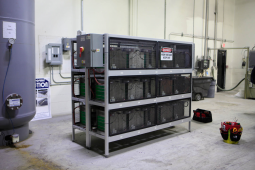I am in the process of getting a large quantity of prismatic Lifepo4 cells and the spec sheet has me confused.
It lists 4.25V as max charging voltage. This seems wildly above the norm for this type of cell.
Long story but they are going to be free.
Any comments much appreciated!
Spec sheet attached.
It lists 4.25V as max charging voltage. This seems wildly above the norm for this type of cell.
Long story but they are going to be free.
Any comments much appreciated!
Spec sheet attached.



